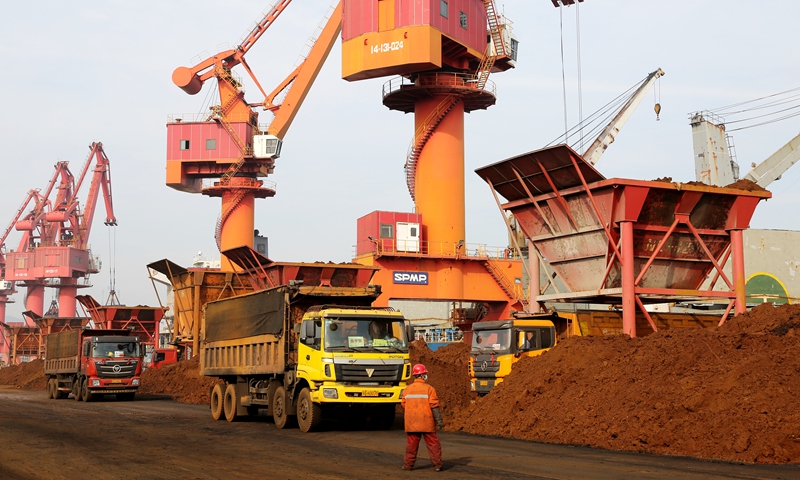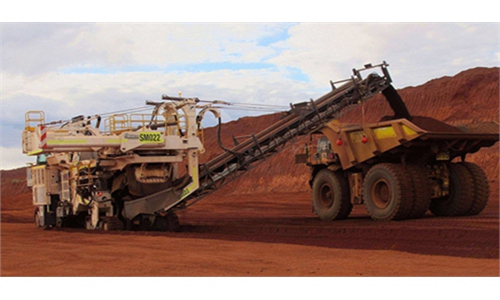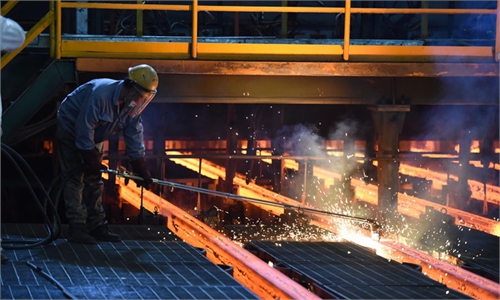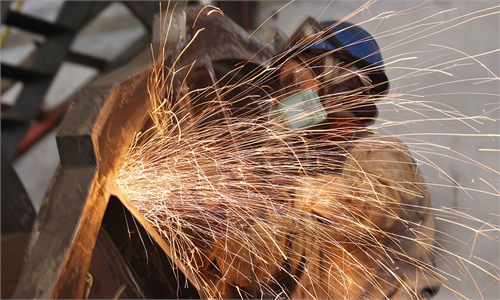
iron ore Photo:VCG
Benchmark iron ore futures on Thursday recorded significant drops as concerns grow over sluggish demand for the raw materials.
In China, the most active iron ore futures on the Dalian Commodity Exchange, for January delivery, plunged more than 7 percent to 762.5 yuan ($117.4) per ton on Thursday, extending a declining trend for the third consecutive day. The past month saw the commodity futures slump nearly 40 percent on the Dalian exchange.
The weak performance of the core commodity is in stark contrast to its recent mercurial run. In mid-May, the S&P Global Platts IODEX 62 percent Fe index reached a record $233.1 per ton, up more than 110 percent from a year ago, while the most active iron ore futures at Dalian hit a historical high of 1,358 yuan per ton.
The wide fluctuation from boom to collapse has somehow deepened worries over whether the economic recovery is losing steam as a slew of economic indicators issued recently have fallen short of market expectations. China's industrial output increased 6.4 percent year-on-year in July, lower than the forecast 7.9 percent rise and June's 8.3 percent growth. Retail sales increased 8.5 percent in July, also lower than forecasters had expected.
While it is still hard to assess whether the softening economic data has weighed down commodities prices in general, it is worth mentioning that the reasons behind the fall in iron ore prices are complex.
China's steel sector is under pressure to curb output for emissions reduction purposes, while unprecedented rainfall across the country and resurgence of the COVID-19 outbreak has created a disruption across production activities in some areas of the country. Internationally, expectations that the Fed is about to start its monetary policy shift has also reversed the factors that used to push up commodities prices. Finally, regulatory crackdown on malicious speculation that once contributed to the soaring of iron ore prices has also played a role in bringing iron ore back to a more regular range.
If anything, the sharp fall in iron ore prices could call for renewed attention on China-Australia trade, which still grew at a considerable rate in the first seven months of this year despite the headwinds created by deteriorating bilateral relations. In the January-July period, bilateral trade expanded by 34.2 percent year-on-year, with imports from Australia up by 37.4 percent, according to data from the Chinese customs.
Australia is China's main source of iron ore imports. Although there have been trade disputes between the two countries over a range of products, the previous surge in iron ore prices is widely considered to be a major factor in maintaining Australian exports to China at high levels amid their souring ties.
Yet, with the key variant, iron ore prices, returning back to a more regular range, the true state of China-Australia trade is likely to become clearer in the future.
As China, the world's largest iron ore consumer, continues to push ahead with carbon neutrality targets, it could be expected that global iron ore trade may shift from a seller's to a buyer's market.



